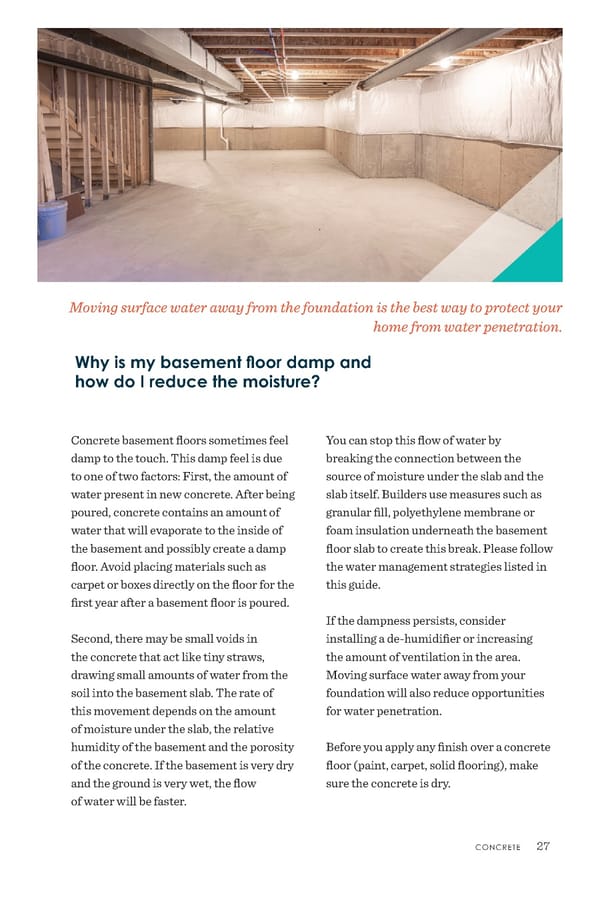Concrete basement floors sometimes feel damp to the touch. This damp feel is due to one of two factors: First, the amount of water present in new concrete. After being poured, concrete contains an amount of water that will evaporate to the inside of the basement and possibly create a damp floor. Avoid placing materials such as carpet or boxes directly on the floor for the first year after a basement floor is poured. Second, there may be small voids in the concrete that act like tiny straws, drawing small amounts of water from the soil into the basement slab. The rate of this movement depends on the amount of moisture under the slab, the relative humidity of the basement and the porosity of the concrete. If the basement is very dry and the ground is very wet, the flow of water will be faster. You can stop this flow of water by breaking the connection between the source of moisture under the slab and the slab itself. Builders use measures such as granular fill, polyethylene membrane or foam insulation underneath the basement floor slab to create this break. Please follow the water management strategies listed in this guide. If the dampness persists, consider installing a de-humidifier or increasing the amount of ventilation in the area. Moving surface water away from your foundation will also reduce opportunities for water penetration. Before you apply any finish over a concrete floor (paint, carpet, solid flooring), make sure the concrete is dry. Why is my basement floor damp and how do I reduce the moisture? Moving surface water away from the foundation is the best way to protect your home from water penetration. CONCRETE 27
 ANHWP Care & Maintenance Guide 2022 Page 28 Page 30
ANHWP Care & Maintenance Guide 2022 Page 28 Page 30